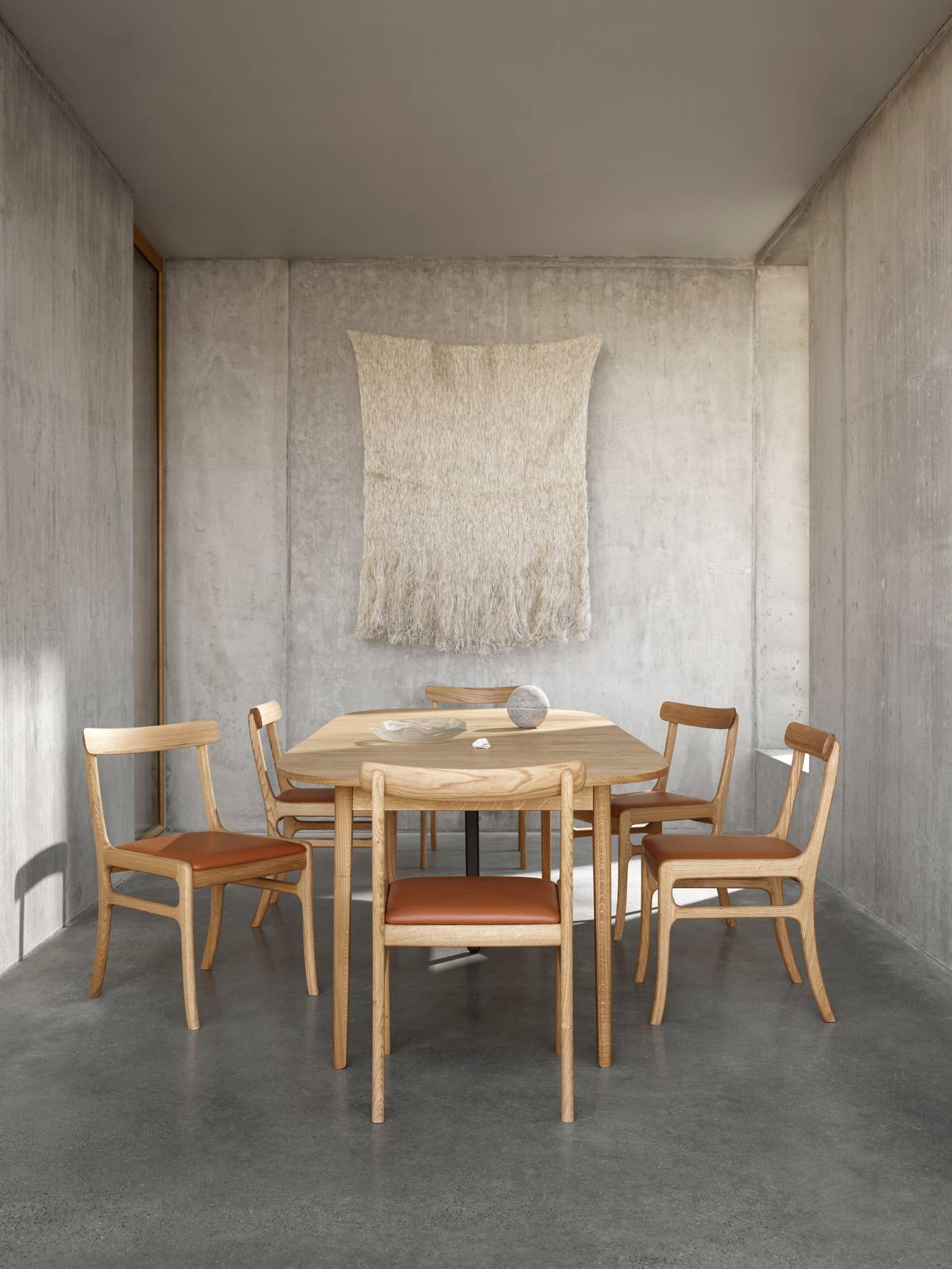
The Rungstedlund Series was designed by Danish designer Ole Wanscher who drew inspiration from English furniture from the 1700s – as demonstrated by its slender form and curved silhouettes.
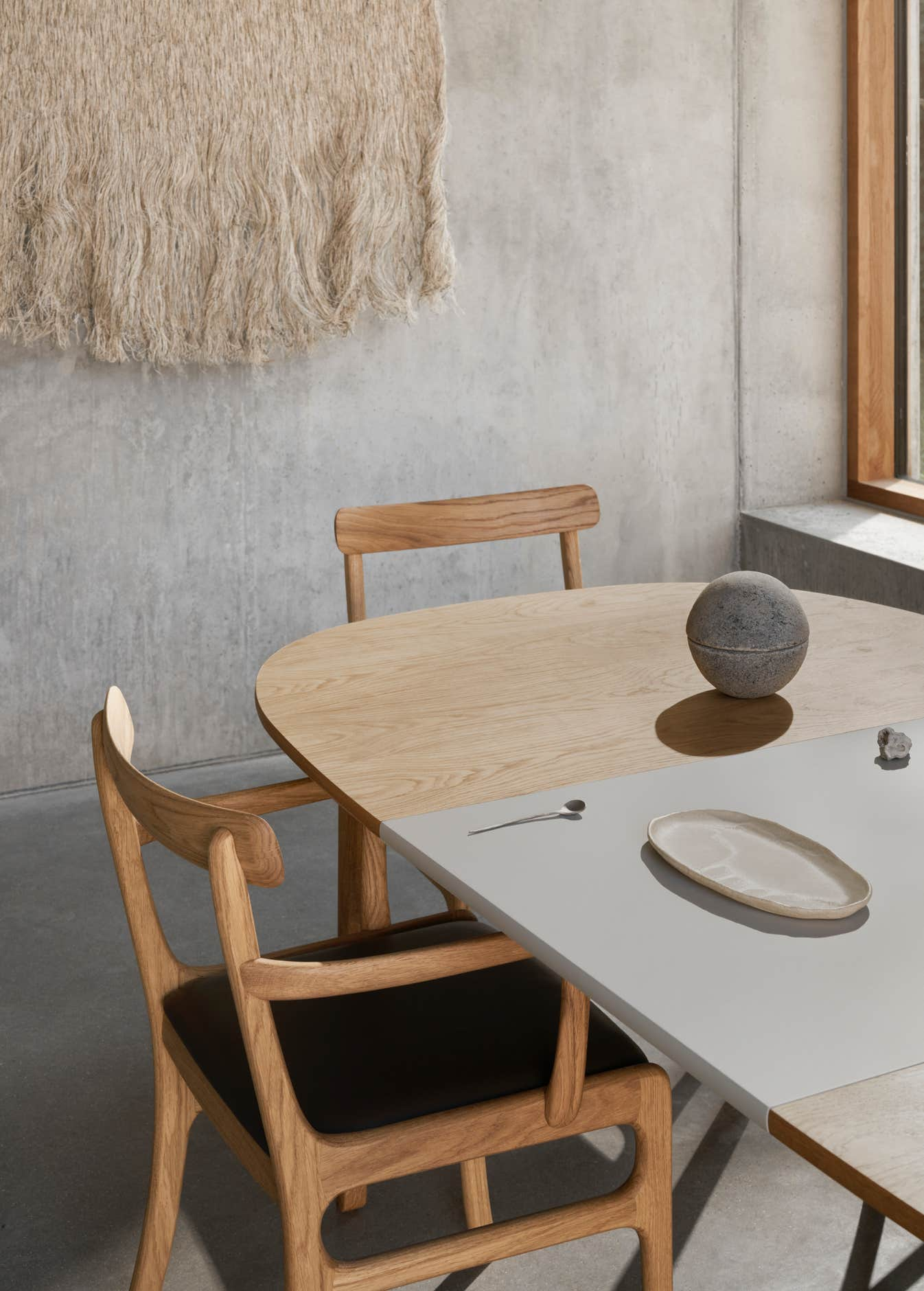
The country house Rungstedlund, from which the series takes its name, is formerly the home of the Danish author Karen Blixen. Blixen was born at Rungstedlund in 1885 and lived there until she moved to Kenya in 1914. In 1931, Blixen returned to her childhood home, and in 1958 she secured the future of the property by establishing a foundation to which she assigned all her author rights.
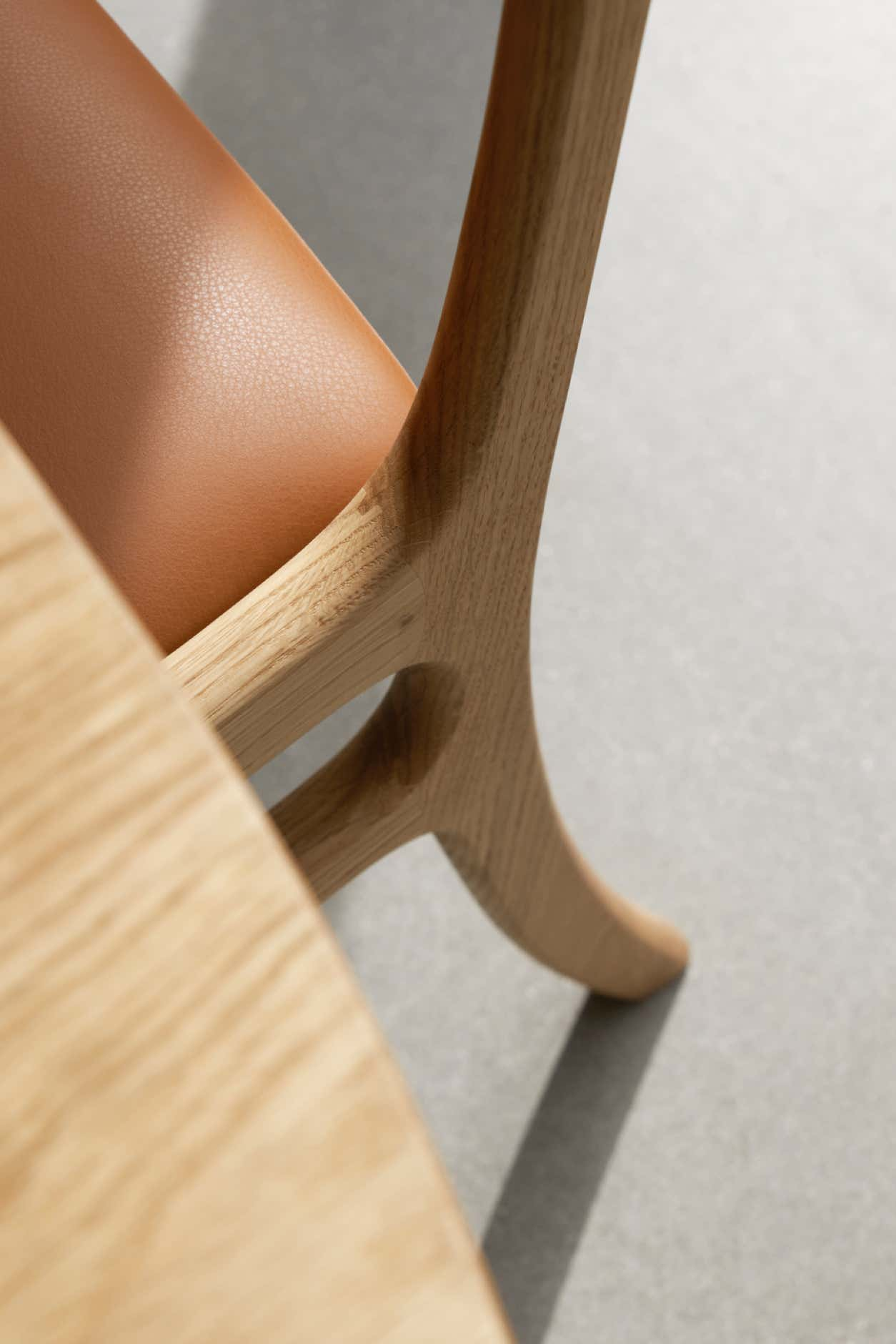
In 1960, Blixen was one of the initiators of The Danish Academy, which was headquartered at Rungstedlund, and it was in this connection that Ole Wanscher was commissioned to design the dining table and chairs in 1962.
Today, the site houses the Karen Blixen Museum, which opened in 1991.
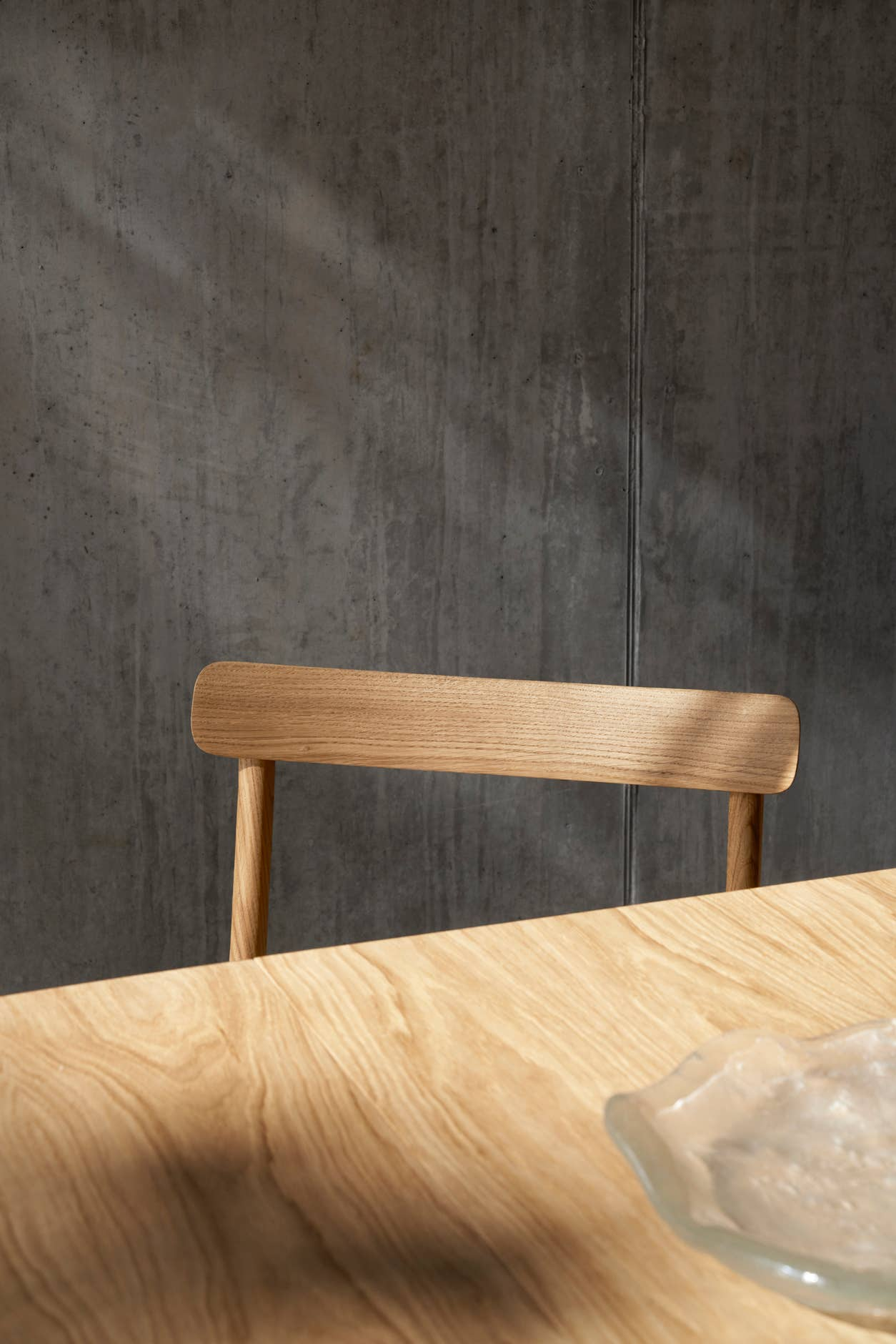
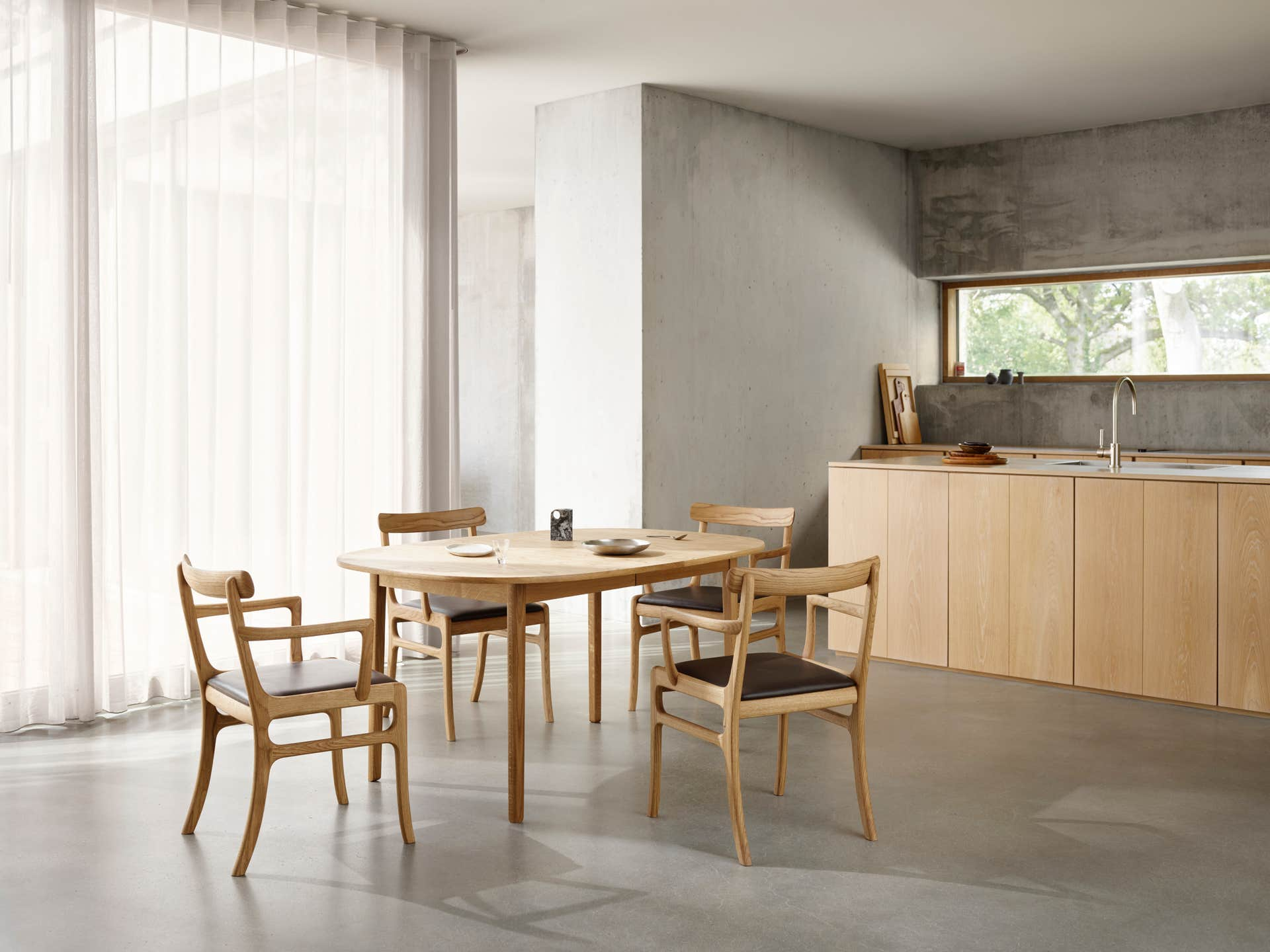
The Rungstedlund Series' elliptical dining table features a table top in mirrored crowncut, bookmatched veneer, highlighting the beautiful, tactile grain of the wood. The square, vertical table legs slope slightly on the two inner sides which are joined in a rounding that gives the table an almost floating appearance.
Rungstedlund Table – 145 x 105 x H72 cm
Extension leaf – 65 x 105 cm
The Rungstedlund Series' dining chair is characterised by its organic shapes and is available with and withoutarmrests. The chair's hind legs and back support are carefully assembled using so-called rounded finger joints - a zigzag-patterned system that requires precise craftsmanship and subsequently elaborate polishing.
Rungstedlund Chair w/o armrest – W49,5 x D54 x H78 cm – Seat height 44,5 cm
The armrests feature beautifully crafted transitions that connect seamlessly to the chair legs which curve slightly backwards - a detail that lends the design a dynamic expression. The chair's narrow, steam-bent backrest adds a lightness incontrast to the comfortable padded seat.
Rungstedlund Chair with armrests – W49,5 x D54 x H78 cm – Seat height 44,5 cm
Knud Erik Hansen, CEO and third-generation owner of Carl Hansen & Son, says about the launch: "Ole Wanscher's deep respect for materials, craftsmanship and function are values that we strongly relate to at Carl Hansen & Son, and we're therefore very proud to have his furniture design in our collection.
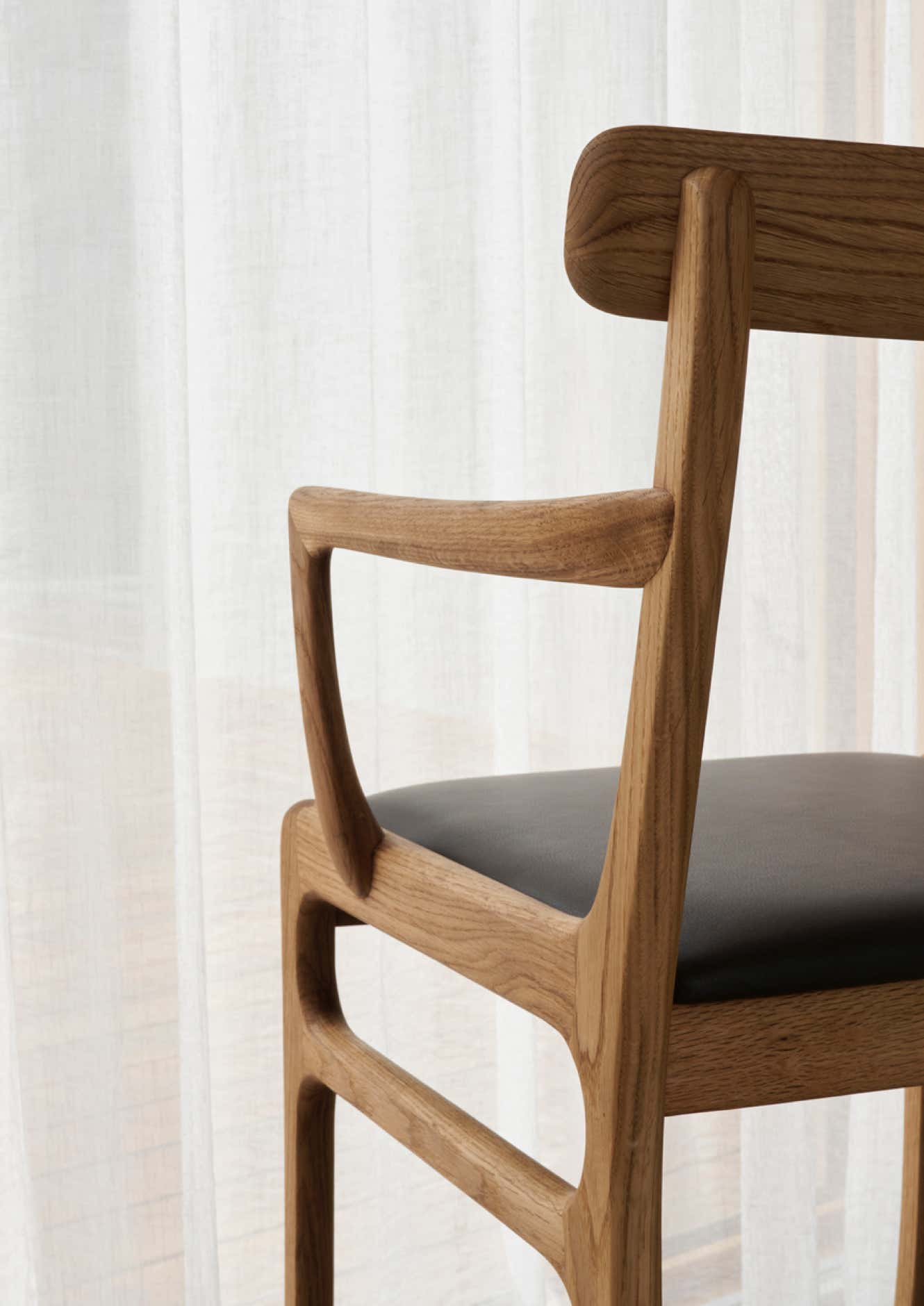
However, Wanscher's designs neverreceived the global exposure they undoubtedly deserve, and this is something we want to change. At Carl Hansen & Son, we're therefore presenting the Rungstedlund Series and the other Wanscher designs via our international sales organisation so that they become available to a global audience."
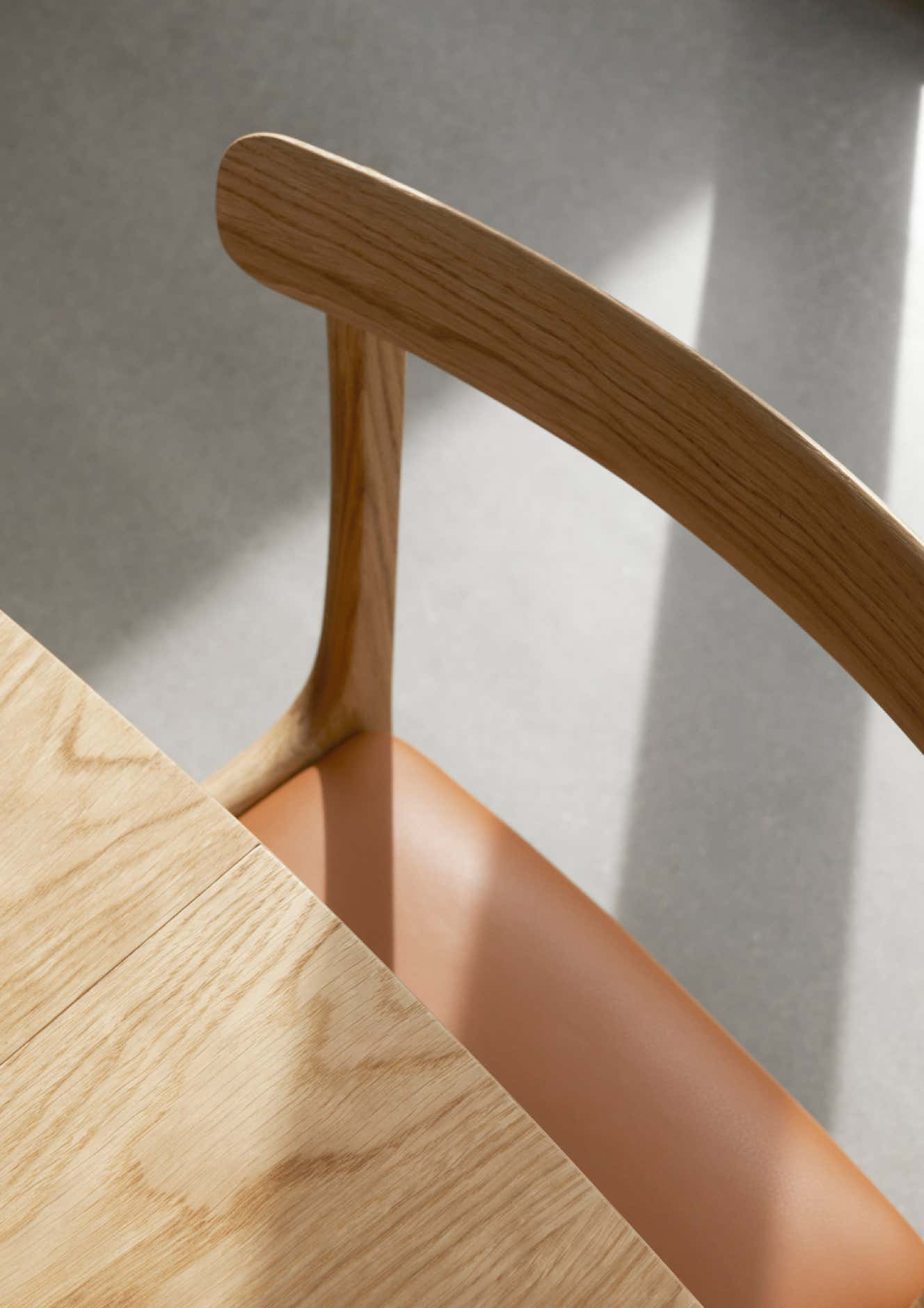
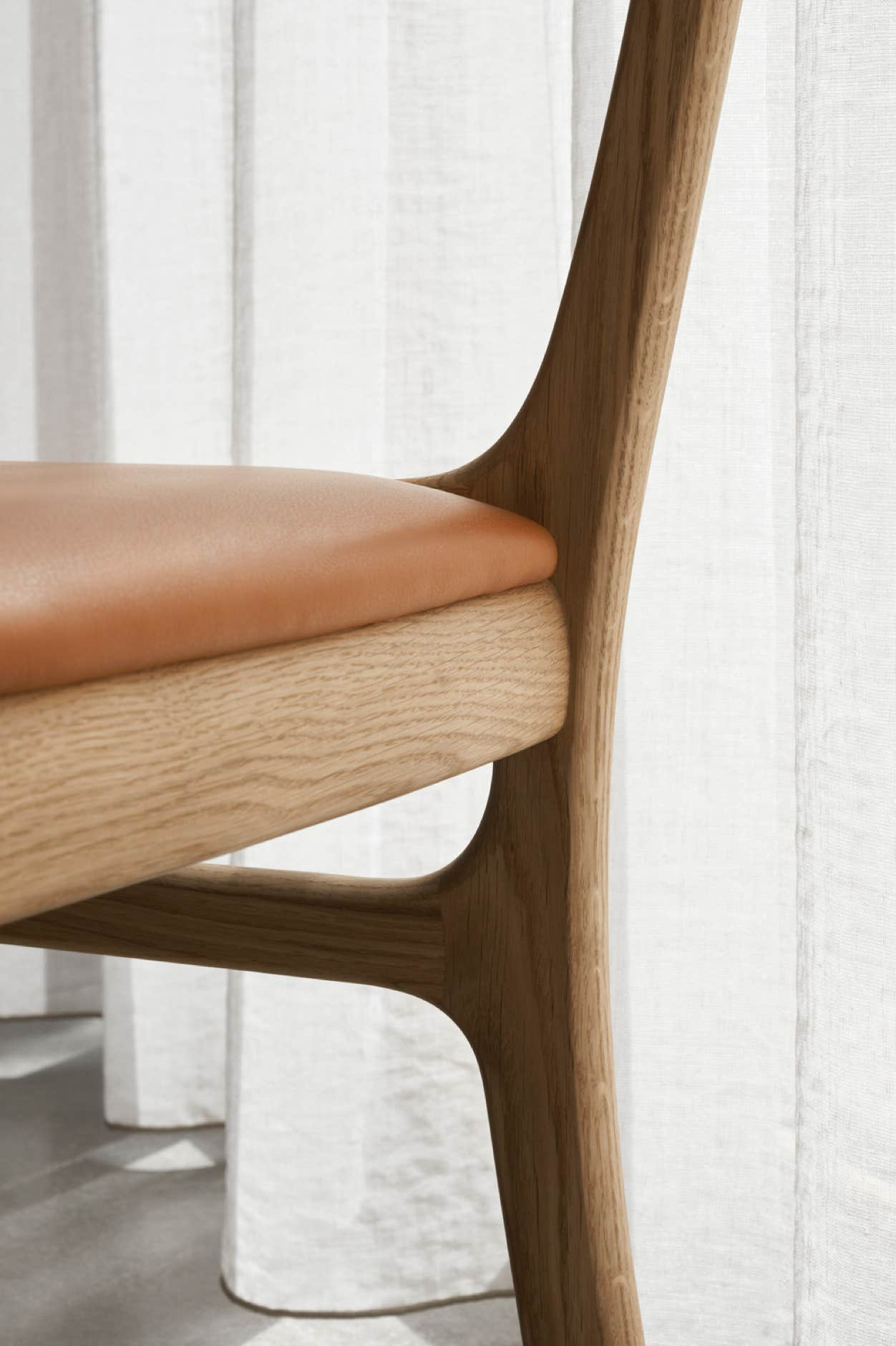
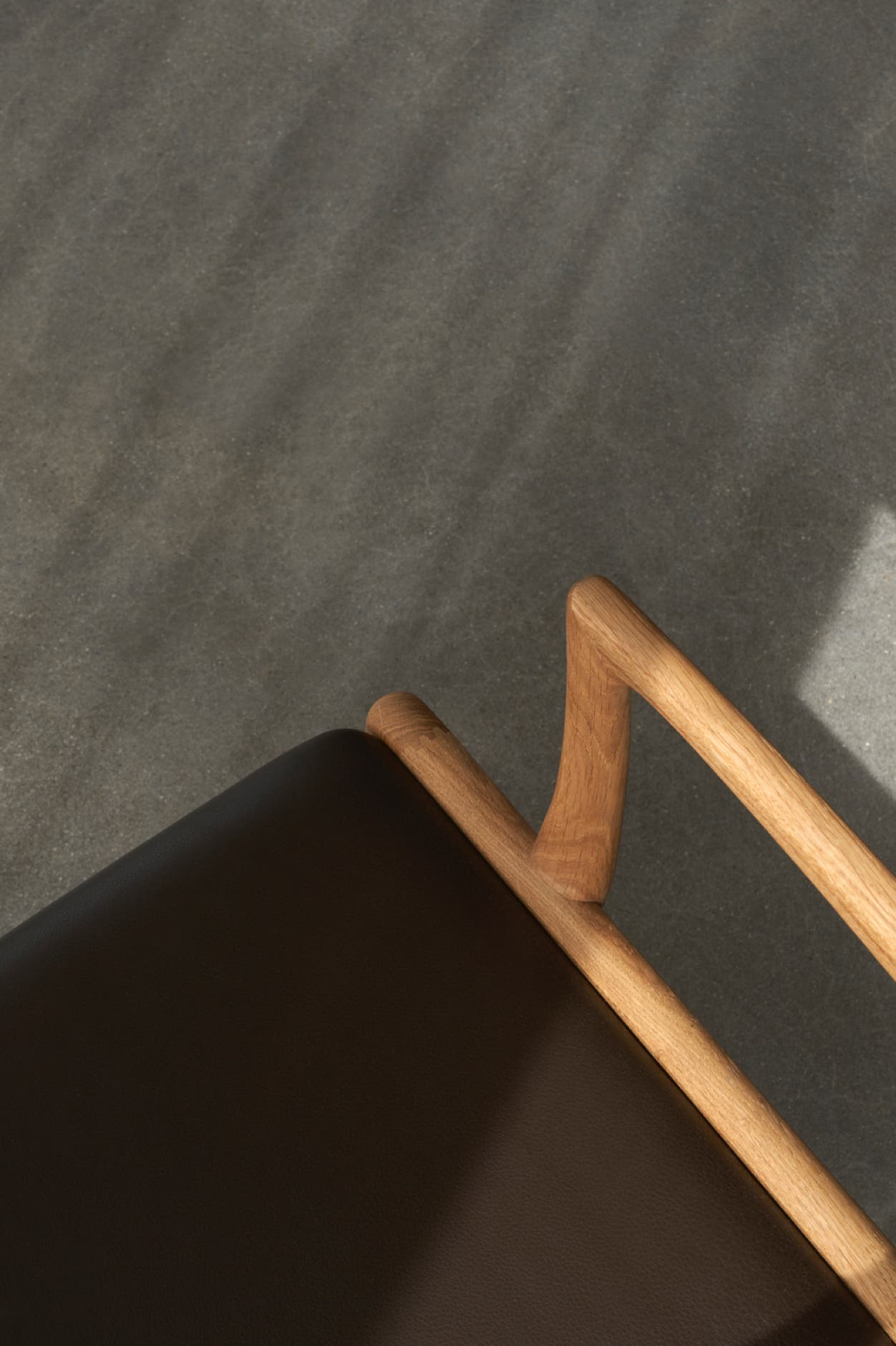
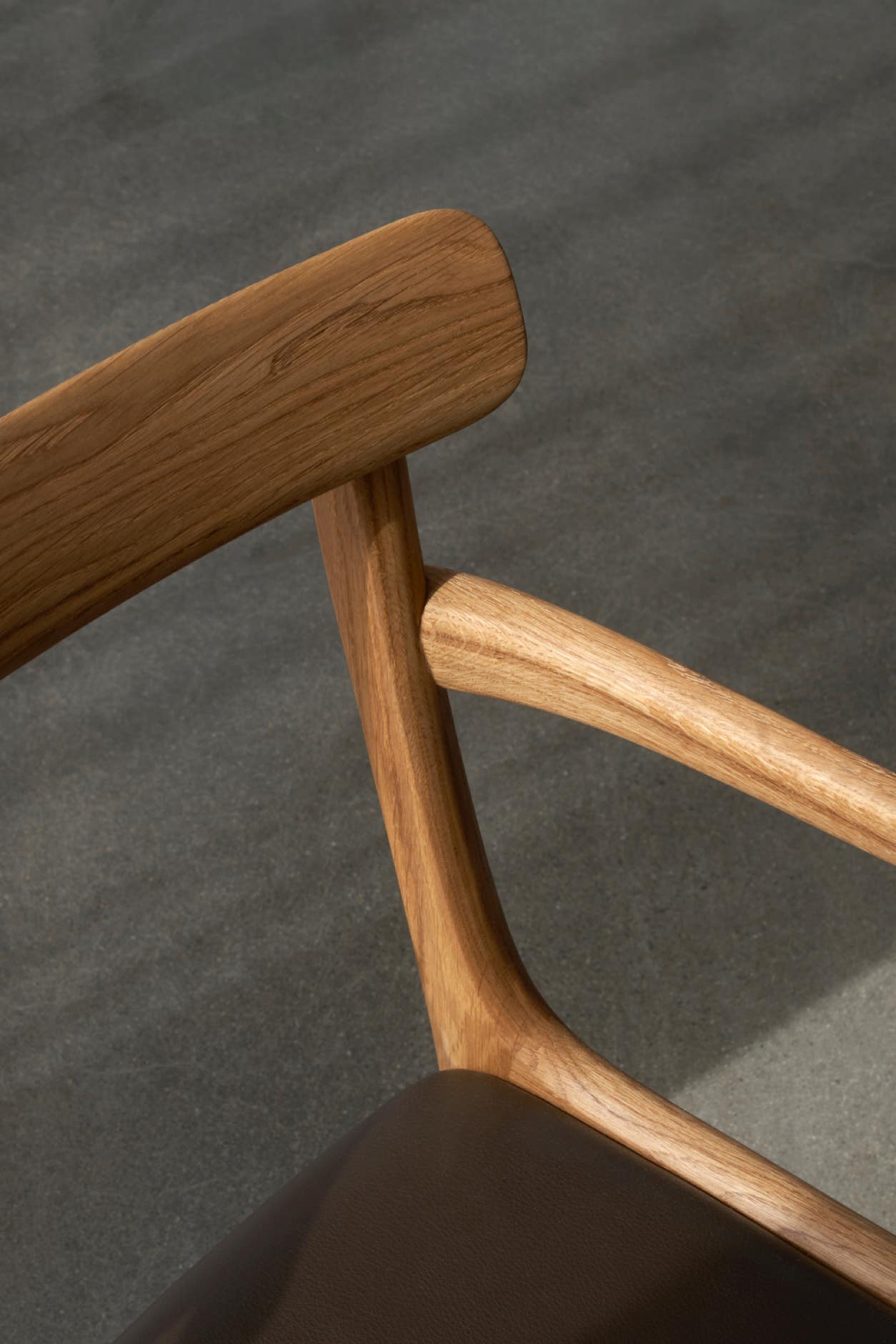
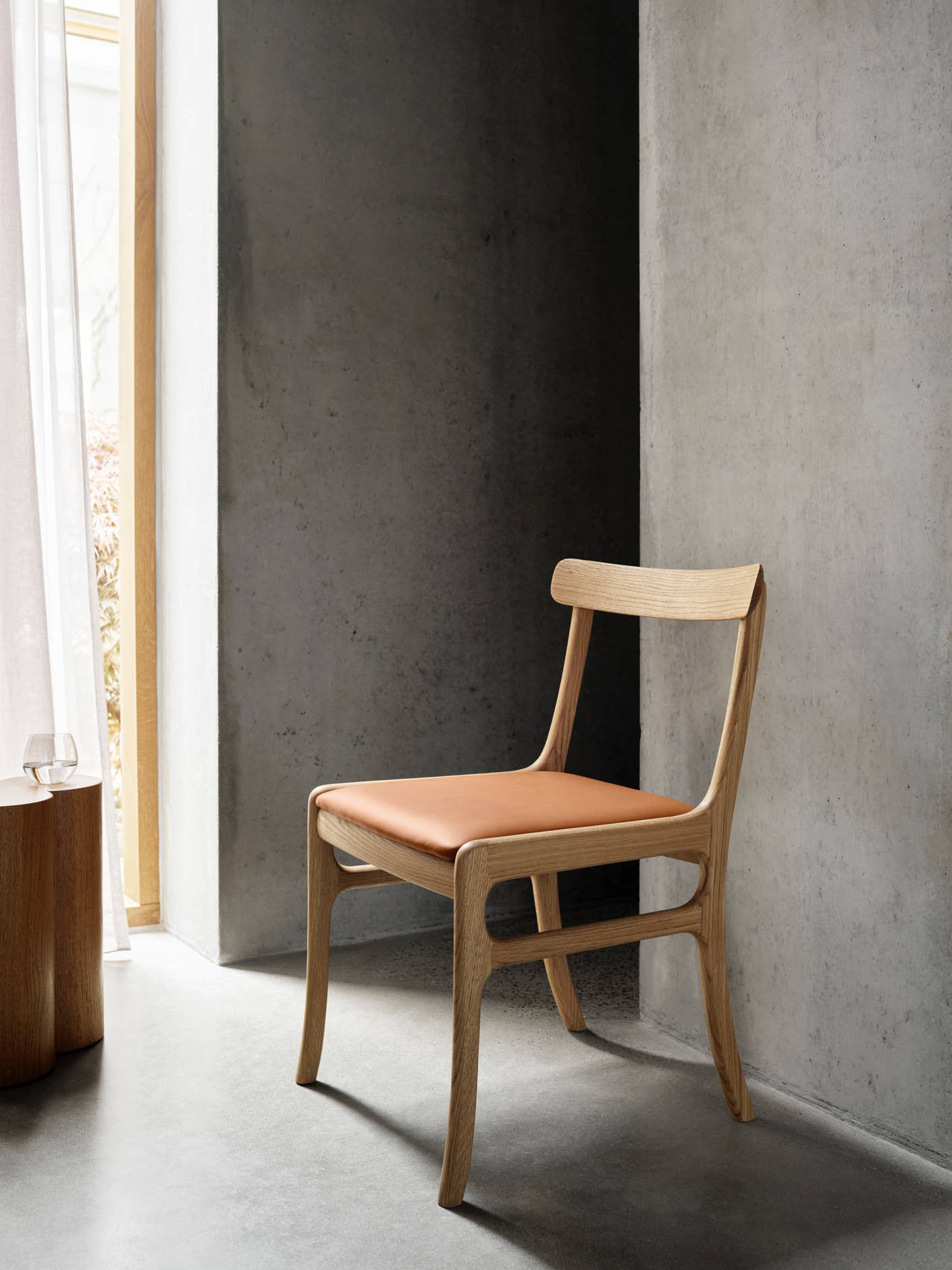
Ole Wanscher

Ole Wanscher (1903-1985) was integral to the core aesthetic and functionality of modern Danish design. He studied under Kaare Klint at the Royal Danish Academy of Fine Arts and later worked at Klint’s design studio before becoming an independent furniture designer. He helped shape Danish furniture design as a designer and as an educator when he took over Klint’s professorship at the Academy.
Wanscher’s classic and contemporary designs made him popular. In 1958, the Danish newspaper Politiken wrote: “Owning a Wanscher chair is an adventure every day, and will
be so even several hundred years from now, for this is how long it lasts”. Today, his modern classics are still revered for their detail and his deep respect for materials.
While traveling through Egypt and Europe, Wanscher studied furniture design, finding inspiration in varied visual expressions that he incorporated into his own unique design aesthetic. He viewed furniture design as a branch of architecture and emphasized slim dimensions and resilient forms – a quest exemplified in many of his works, particularly the Colonial Chair and Colonial Sofa.
Wanscher created his best-known designs primarily between the late 1940s and early 1960s, in the post-war era when the “design for everyone” philosophy emerged. In Denmark, some of design’s biggest names created functional and affordable furniture for the Danish people and the small spaces they lived in. Wanscher took great interest in industrially produced yet high-quality furniture, designing several successful pieces.
Wanscher’s design earned him numerous accolades, including the Copenhagen Carpenters’ Guild Annual Award and the gold medal at the Milan Triennale in 1960 – honors that underscored Wanscher’s esteemed reputation both in Denmark and internationally.